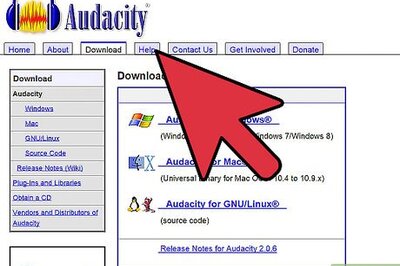
views
New Delhi: No other Indian song is said to capture the poignancy of a do-or-die moment, be it in the sporting field or at the frontiers, the way Jana Gana Mana can.
Jana Gana Mana, composed by Nobel laureate Rabindranath Tagore and sung for the first time at the Calcutta session of the Indian National Congress on December 27, 1911, has fired a nation's patriotism and united it in crisis and triumph for 100 years.
In its 100-year-old history, the Indian national anthem has played a key role in unifying a country torn apart by a bloody partition, nationalist movement and popular uprisings. It has moved a country to tears during sporting victories, unfurling of the national flag and cultural and public occasions.
Written in the style of a Brahmo hym, Jana Gana Mana was officially adopted by the Constituent Assembly as the Indian national anthem on January 24, 1950. Unlike Bankim Chandra Chattopadhyay's more fiery 'Vande Mataram' that inspired freedom fighters to march to their gallows, the Jana Gana Mana anthem is more a celebration of national unity.
Netaji Bose's Indian National Army adopted Jana Gana Mana as the National Anthem and Mahatma Gandhi in 1946 said the "the song has found a place in our national life." But the song's popularity is not without its share of controversies.
The Hindutva accusation that Tagore scripted the song for George V has divided thinktanks. Several theories have been cited to prove that the song is a celebration of the motherland rather than a eulogy for the colonial rulers, even though it was sung during a session of the Congress that felicitated George V.
Reviving the Jana Gana Mana
The popularity of the national anthem was on a downward trend following repeated calls by Hindu rightwingers to replace it with 'Vande Mataram'.
'Jana Gana Mana' was chosen as the National Anthem of the 1947 Republic of India after the secularism of 'Vande Mataram', that alluded to the motherland as goddess Durga, was doubted by Muslims, Christians, Parsis, Sikhs, Arya Samajis and others who opposed idol worship.
A peppy but heartfelt rendition of the national anthem by two of India's music legends – AR Rahman and Lata Mangeshkar – have found huge resonance among a new generation of brand-conscious young Indians hooked to new age music.
The precise moment when India lifted the 2011 cricket World Cup, an elated nation burst into spontaneous renditions of the national anthem in a fierce show of national pride. Shopowners rose behind their cash counters, people inside offices tore away from their keypads, squatters at tea shops put down their glasses and motorists halted by the roadside.
From being relegated to a routine exercise at Independence Day and Republic Day functions at schools and colleges, the national anthem, all of a sudden, became the rallying point for millions of Indians, in their show of intense patriotism.
Interestingly, Tagore had himself not only allowed legendary musician Pankaj Kumar Mullick to set tune to his verses but also let him alter lyrics of 'Rabindrasangeet'. Mullick was once also asked by the then Prime Minister Jawaharlal Nehru to set the singing style for 'Jana Gana Mana'.
What are the rules?
A formal rendition of the national anthem takes 52 seconds. A shortened version consisting of the first and last lines (and taking about 20 seconds to play) is also staged occasionally.
The text, though Bengali, is highly sanskritized (written in a literary register called Sadhu bhasa). As quasi-Sanskrit text, it is acceptable in many modern Indic languages, but the pronunciation varies considerably across India, according to the government’s official website that cites the rules and regulating pertaining to the singing of the anthem.
According to the government rulebook, whenever the anthem is sung or played, the audience has to stand to attention. However, when in the course of a newsreel or documentary the anthem is played as a part of the film, it is not expected of the audience to stand. Standing is bound to interrupt the exhibition of the film and would create disorder and confusion rather than add to the dignity of the anthem.
Here is a playlist of different versions of Jana Gana Mana:
####




















Comments
0 comment